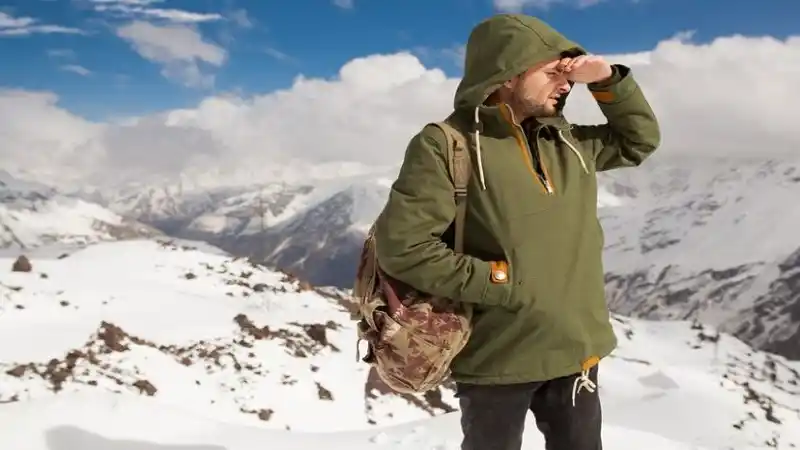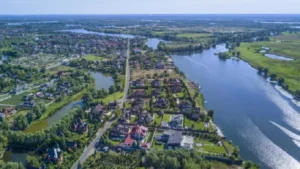Photography at Altitude Capturing the Essence of Everest Base Camp
Shooting photos at altitude, especially on the way to Everest Base Camp, provides a unique mix of difficulties and stunning moments. Trekking higher into the Khumbu region, trekkers have views that will stay ingrained in their minds of rugged, snowy mountains surrounded by gushing glacial rivers and quaint Sherpa villages. If you want to truly capture this environment then not only is it necessary to have years of experience, but also an understanding of the location and what makes this trek iconic.
The angle of light at high altitudes can make for some stunning spectacles. Stark and intense contrast of shadow versus light emphasizing texture in the jagged landscape is what makes for good photographs, but not without clear skies and bright sun. The golden hours around sunrise and sunset are even more magical, as the snow-covered Giants light up an incredible light of gold, while prayer flags flutter in the wind. Every snap is a keepsake — whether it be the panoramic image of Mount Everest overpowering the heavens, Gokyo Lakes strewn together like pearls on a string or just everyday life passing by those Sherpa folks.
It is also more difficult and harder on your gear to carry heavy camera equipment at altitude, and thinner air can cause problems with your stuff breaking down faster. The toughness of the terrain means trekkers have to watch their gear weight, using cameras that are lightweight and versatile lenses that offer a range from wide arching landscapes, to soft focused close ups offering character insight on village beginnings. Knowing how high-altitude restrictions can spark creativity, rendering ordinary composition and framing into environmental essence.
And such cultural diversity of the region of Everest, heightens any photographic story in Everest Base Camp Trek. Vibrant Namche Bazaar comes to life with images of its bustling market and colorful community, while the reverence portrayed at memorials honoring lives lost on the mountains shows an acute dimension to this human-nature relationship. Conversing with locals is a wonderful way to soak in the culture but also enables those small, serendipitous encounters that expose the smiley faces of people who call this part of the world home.
Photography can be a powerful way for many hikers to tell the interior and exterior story of their journey. As much as beautiful photos are nice to have, it means more to tell a story of an epic journey with highs and lows, struggles and triumphs along the way….all while surrounded by the magnanimous Himalayas. With each photo being a relic and memory of an experience, the interactions that go with the places are saved too.
In the end, photography above sea level on this semi-arid high-altitude journey is an art; it takes time, courtesy and innovative aptitude. A chance to celebrate the natural beauty and cultural heritage of one of the world’s most revered trekking routes. While looking down the barrel of a lens trekkers freeze frame it all, not to just capture images but an entire experience tough, rugged,a journey from ordinary life as they behold it framed against grandeur of the Himalayas.
What is High Altitude Photography
The Everest Base Camp trek is one of the finest high-altitude photography locations in the world. The dramatic mountain landscape, including imposing peaks, alpine lakes and vibrant local culture provides photographers with exciting opportunites at the same time as distinct challenges. The higher in altitude we go (reaching up to [3000 m+]), the thinner the atmosphere, which affects light quality and camera work. Photographers have the added challenge of adjusting their shooting style in order to take advantage of the beautiful natural landscapes, while at the same time dealing with working within such high altitude constraint. The quality of the air can produce rich colors and sharp contrast, but very intense sunlight can mean an adjustment to exposure settings or you will over expose. Local flavor is equally important as it provides more perspective to your photographic storytelling. The images of the landscape in context to the people — their customs, traditions and spiritual reverence to the mountains enriches the storyline captured. It is essential to be prepared, knowledge of your environment can help photographers capture a moment that only lasts seconds leading into an image you really want to convey with your viewers. High-altitude photography is an adventure that brings you the experience of exploration and being one with nature; be it the sunrise lighting up Everest or deft details of Sherpa life.
Camera Equipment for Trekking
When hitting a trail like the 14 Days Everest Base Camp trek, choosing from the best photography gear for you is critical to being able to take beautiful pictures without eating all your weight. Casual photo-takers will fit right in with lightweight, ultra-compact cameras, especially mirrorless systems or high-end compacts that provide the versatility of a traditional interchangeable lens DSLR without the weight and bulk. An all-in-one zoom lens is usually a great suggestion for those who want to shoot both wide and close, landscape and portrait. A tripod is also a great help, particularly for low light situations or long exposure shots but it does need to be small and sturdy as you may have to carry it with you a longer distance. Other add-ons, such as polarizing filters, can give you less glare off of snow and water making colors and contrast better. When flying at high altitudes with cool temperatures, it is very important to bring extra batteries as low temperatures at high elevations can kill your battery life quite well. Plus, gear that is weatherproof or comes with 3rd party protective cases will keep your equipment working in unpredictable mountain weather. Finally, you will want to pack a lens cleaning kit as dust and or moisture can easily gather during treks and negatively impact images. That will allow photographers to concentrate on their creative vision and be prepared to capture the beauty and culture of high-altitude photo ops.
Camera Settings for High Altitude
You need experience flying at high altitude and some knowledge of the challenges altitude introduces to your camera and its images. When you get to elevations over 3,000 meters, the lack of atmosphere means there is a considerable amount more light and UV entering through the lens than sea level which will inevitably mean adjustment in camera settings. A great place to start is by using manual exposure on your camera so you can control everything. If you lower the ISO on your camera, it would also help to reduce noise in a picture because there are many bright conditions where high sensitivities are not required. Relatively, a smaller aperture (higher f-stop) should be used to increase the depth of field when shooting landscapes and achieve sharpness between subjects in the foreground or background. Just be careful of diffraction at super tiny apertures tends to soften images up. Also, think about tweaking the white balance a bit to help neutralize all of that ice-cold blue you often get at more elevated latitudes. Because colors are vibrant due to the lack of air at this altitude, a polarizing filter can also help reduce glare and make contra-pop. Using brackets when photographing in rapidly changing light conditions can be very helpful—taking multiple shots with different settings of the same scene to capture the best results. Oh, and watch your histogram to avoid clipped highlights and shadows which capture all of a landscape.
Good Times of Day for Amazing Photos
This is a very important part of photography, even more so in the high-altitude light of this Everest Base Camp trek. You will want to Get The Best Nature Photos in the Morning and Afternoon–during the golden hours (of shortly after sunrise and before sunset. The soft, warm light make stunning contrasts and showcases the textures of the landscape. This showed that The low angle of the sun gives additional depth and dimension, highlighting mountain peaks, ephemeral valleys and glacial lakes in long shadows. There are always clear skies early in the morning that provides a panoramic view to all four sides over these sunbathed peaks even against this fierce sunrise. Even the angled late afternoon early evening light plays,which can produce strong shadows and dark brooding skies, when photographing this change of light brings up total atmosphere rage in colors. Also, during these times there are significantly less crowds giving photographers the opportunity to create tranquil and intimate images. Whilst images will look their best in sunshine, it is worth bearing in mind that clouds can provide drama and interesting focal points to compositions. On the other hand, they can also block mountain landscapes by rainfall so you will need to watch the weather. Ultimately, and by scheduling shoots so as to capitalize on these optimal periods, a photographer may stand his or her best chances of achieving the breathtaking scenes that epitomize high-altitude terrain in the most authentic way.
A GUIDE TO COMPOSING LANDSCAPE PHOTOGRAPHS
The Creation of The Compelling Landscape Photograph is Linear — or naturaly linear for the landscapes in which we have created from the Short trek to Everest Base Campimmensely by how and where we choose to compose our image. The basic concept is the rule of thirds — divide the frame into a grid of nine squares and position your main subject along these lines or at the intersections. It creates balance and gives the eye somewhere to settle. Here lines like trails or rivers can help to guide the viewers eyes towards the subject and add a sense of depth to your composition. Adding foreground elements such as rocks, piece of vegetation etc. to any type of wide image or mountain scene will give the viewer a sense of scale and make them feel like they are in the photograph as well. Also, shooting from different angles is a great way to get different perspectives on your compositions! Lastly, the choice of focal length can be important in influencing how elements within the frame relate to each other; wide-angle lenses are perfect for big sweeping landscape shots, while longer-doing exactly what the name suggests-isolating certain features. Finally, where you place the horizon line makes a big difference in the mood of your photo — it should be high or low. This inside peek into the way we approach aerial photography will help photographers focus more on composing their awe-inspiring, high-altitude images and tell a better story about their surroundings using techniques that make epic scenery pop.
The Majesty of Everest captured
To meet the mountainous magnificence of Everest head-on — and portray its height and grandeur in images — demands more than a good camera, however. Because of that, for Everest photography, golden hour is key where side-lighting cast these beautiful long shadows across the mountain and bring out all its details. Composition is everything, and having those elements of your composition in the foreground can really help play with scale, and get the viewer eyeing into the shot. Photographers shoot huge far off landscapes using wide angle lenses to show Everest’s character as it lengthens high above surrounding peaks. However, in some cases a close-up of the craggled rock surface can express the mountains provision of strength as well, which is also vital to take into consideration. And likewise, making a bit more time to wait for that perfect moment can pay dividends like neon cloud structures pirouetting in and around the summit or colors escaping from deep inside your living room- I mean the physix of sky on display at sunset. The awe that we experience just standing in the shadow of Everest comes through in our images and speaks to people on an emotional level, giving them a sense of what it is like to connect with this iconic peak. Through careful consideration of light, composition, and vantage point, photographers can produce beautiful images that respectfully portray this towering giant.
Street Portraits: Interacting With Locals
The Everest Base Camp trek provides the perfect conditions for portrait photography with many of the locals turning into subjects to give a glimpse of the lifestyle and traditions of Sherpa community. Interaction with residents is vital to real photos — treat locals with a modicum of respect and curiosity to get naturalistic, almost candid portraits. Take photos with context — the photo of a Sherpa in front of their home or during some cultural event will be much more interesting than one alone. For portraits, natural light is usually a good option and the most beautiful light tends to be in the morning or late afternoon hours. Opting for a big aperture can result in the much loved bokeh — which throws the background out of focus but keeps the subject in sharp detail, emphazising details within their expressions and attire. Similarly, respecting the customs of a place — asking if it is okay to take someone’s photo in many cultures shows respect and will likely yield a more genuine exchange, too. As smiles and a simple namaste emerge, eyes glistening with the enduring spirit of the Sherpa people gaze back at Landis’ camera allowing for more unguarded images to reveal among other things, their inner warmth and boundless strength. Portrait photography in the Himalayas as a whole doesn´t only capture individual stories but also sets down the region´s deep cultural roots, providing lasting mementos for both the photographers and their subjects.
Trek — full of Wildlife Photography
One the Everest Base Camp trek Weather, wildlife photography is an important part of your journey as you seek to capture the unique fauna that inhabit these regions. Whether it be the elusive Himalayan tahr or soaring eagles, a plethora of wildlife await photographers who sheltering in the untamed innocence and grandeur concealed in the landscape. The sooner you arrive the better as wildlife are more active during cooler hours. Required to be seen from a distance; zoom in with a telephoto lens, get Close-ups without disturbing the fauna. Emphasize the Composition: It also improves wildlife photography, where a little aspect of the surroundings such as rough mountains or vibrant flora can add up into further characterization of the subjects. Know your animals as well, this can benefit in capturing some great images by knowing where a tahr is likely to be grazing on steep slopes or a lammergeier circling up high over the peaks. Equally important is to respect the animals and their biosphere, by not impacting the fragile ecosystems that often house such unique wildlife. Armed with an abundance of patience, ability, and a deep respect for the natural world — hikers can then create beautiful images to exhibit the wonderful wildlife at play in the Everest region.
Addressing Lighting Issues
Photography in high altitudes is a whole another ball game with different lighting challenges to what you typically face, especially with the dynamic settings and surrounds found along Everest Base Camp trek. That super bright sun can create such strong lights and darks that it becomes almost impossible to keep detail in both the areas of highlight AND shadow. Dealing with these problems requires the knowledge and control of your exposure settings. In good camera mode you let the photographers to set ISO, exposure and shutter speed etc… according their requirement. When it’s bright outside, you want a steady exposure of the subject, but a lower ISO and shutter speed will lead to less noise in your photo at such conditions. In addition, using filters — like polarizing filters — can cut through glare and really make colors pop if you are shooting something reflective like a body of water with tinted tones (think glacier lakes). Additionally, using bracketing exposures can help to capture the entirety of the dynamic range of a scene — providing more flexibility in post. This kind of light is nice to create soft pictures (which are often more flattering) and can be used at the time of shade or golden hour to assist you with your shots. Lastly, watching the weather can create both difficulty and opportunity; moody skies and changing light can really make for an impressive composition – by simply being in the right place at the right time one can turn a nightmare of a situation into something beautiful!
Tips for Protecting Your Gear
When trekking to Everest Base Camp, you need to be sure your photography gear is protected so it will remain in working order when you arrive at that harsh high-altitude location. Begin with a solid, weatherproof camera bag that will keep your lenses To protect your camera from moisture and dirt, always use lens caps and body covers when hiking. When trekking long distances, keep your gear out of extreme temperatures (no snow/ice yet) and let it acclimate to the outdoors before using cameras or lenses. Also, keep a few silica gel packets in your back pack, to absorb that extra moisture. Additionally, it is well advised to use a UV filter on your lenses. This will also be like a lens cap that protects your main glass from scratches and accidents. Take care where you take photos; a camera strap is your friend to stop drops on the cobbles. Have a light waterproof cover on hand to quickly put over the fire in case of sudden bad weather. Constantly inspect for any dust or moisture that has gathered in your gear after long days on the trail. Last but not least, carrying a simple repair kit could help to fix small problems quickly and enable you to keep…shots from the way. This means photographers are free to focus on making beautiful images without having to fear their equipment letting them down.
The Trekking Experience — History as Document
The way to Everest Base Camp trekking is the narrative of experience, dynamite landscapes, and rich social background. Photographers should try and build photo stories that include everything from the thrill of departure in the busy streets of Lukla to quiet hours spent at Base Camp. Add wide shots to show the landscape around you, while also getting some close-ups of fellow trekkers or locals to round-off your documentation. It could really go down to keeping a journal, which can add an additional layer of storytelling when reviewing photos later as trekkers take the time to express their innermost thoughts, feelings and emotions on paper in their daily lives. Even though the lack of oxygen and erratic weather patterns can be obstacles, these are all elements that build up to make an adventure worthwhile. You see raw photos of communal meals, laughing around the campfire, and reflective moments that remind you of tripping down memory lane. When trekkers take the time to document their experience in a meaningful way it helps create a rich tapestry of images and tales that can serve as personal mementos and provides inspiration for others to follow in their footsteps.
Drones: Aerial Viewpoints
If you are a drone lover, photography junkie or more relax during the Everest Base Camp trek Itinerary; micro flying camera (drone) in your kit is an opportunity to get closer perspectives of Himalaya environment where generations have only dreamed about. A drone can deliver broad views of snow-capped tips, winding paths and wide valleys that are only a pie in the sky when capturing from the surface. Flying a drone in high-altitude areas is a wonderful experience, but when done right — with planning and knowledge of local rules, as well as consideration for wildlife and the privacy of local communities. You need the correct permits and you must fly properly so your drone will not cause disturbance on the environment or disturb the locals. Aerial: While shooting from the air, play around with varying heights and perspectives to present the mountains as majestic backdrops. The softer light at periods such as early morning and late afternoon should be sought after, as the colors in the landscape will show up better and the detail within the land will appear more dominant. Drones can also assist in telling the story of this trek when they provide context to where trekkers are in relation to the surrounding peaks and valleys. So by adding aerial photography, trekkers can enhance the visual documentation of their escapade and give a whole view what was seen from that height.
High-Altitude Photo Tips: Editing
Post-post processing high-altitude photos is the one step trekker require in NXT photography process, with magic tool added to image editing, which can also add beauty to Everest region seen and unseen. I usually adjust the exposure, to balance any horribly stark contrasts that may have harsh sunlight or dark shadow regions in them. Employ image editing tools like Adobe Lightroom or Photoshop, to improve highlights and shadows — preserving details in bright areas as well as dark. Though color correction which is important as the bright sunlight at altitude can often result in over-exposure and washed out colour. By altering the saturation and vibrance on it, you make the natural colors of the landscape to be more vivid. Cropping helps ensure that the composition does not have any unnecessary elements and puts the focus of the viewer on to the main subject. Sharpen can also be used to bring out detail, especially in a landscape shot that featured textures. Most importantly, keep it real and avoid over-using the technique to create forced moments establishments in a scene. And last (and maybe most important) unify the images in stylistic post-production so they feel like one collective body of work. When photographers make careful edits to images of high-altitude landscapes, it is an opportunity to enhance their work by showcasing the wonder of those trekking achievements.
Social media: How to share your adventure
It is a full customizing social media experience sharing base about your Everest Base Camp trekking & trip with friends, families and fellow adventurers as well. Choose the right platforms for your content, select Instagram if your images are powerful and striking or use Facebook to tell a story through longer posts. Attach your treks to a content plan that promises interesting updates which offer more than just the stunning landscapes but also captures the cultural spark moments and personal thoughts. The more relevant hashtags you use (e.g #TrekkingAdventures or #EverestBaseCamp) the greater outreach you get and the closer you become with other trekkers. Building this community involvement — interacting with followers, replying to comments and giving advice can result in a tight-knit group of individuals. Compile a highlight reel or photo album and tell the story of your trek with photos and narratives that show what you saw along the way as well. Showcase highlights and challenges of everything leading up to the final presentation, including behind-the-scenes moments because it humanizes your posts. And stories or reels will work similarly, bringing a more dynamic visual narrative and showing a taste of what your adventure is about interfacing in even faster way. So share your adventure on just another social media? So that others could believe something easy and for you to keep a souvenir in mind with every mark used _ Well there is no other way!
In Conclusion: Photographs and Reminiscences
One of the most powerful ways to capture and photograph your memories as you experience this incredible emotional and physical journey through an iconic landscape — is by actually preserving them. Every photo is a picture record but also a reflection of the struggles, faces of beauty, friends made along the way. These images from high above snowcapped mountains to close-ups featuring the people of the Khumbu Valley showcase the spirit of adventure. When trekkers see the photographs of their journey, they feel accomplished, nostalgic and even inspired. Through a conscious act of composition, editing and sharing, photographers allow their experiences to be immortalized. Keep it up and increase the love you bring to bear on your surroundings and the culture with which you come into contact, making sure these incredible locations are not misused. In the end, photography is a bridge between and past which we can use to relive such an experience, but also transmit this magic from person to person making them passionate the same way one did. encouraging new generations to learn more about it and love nature even a fraction of how someone once loved nature.





